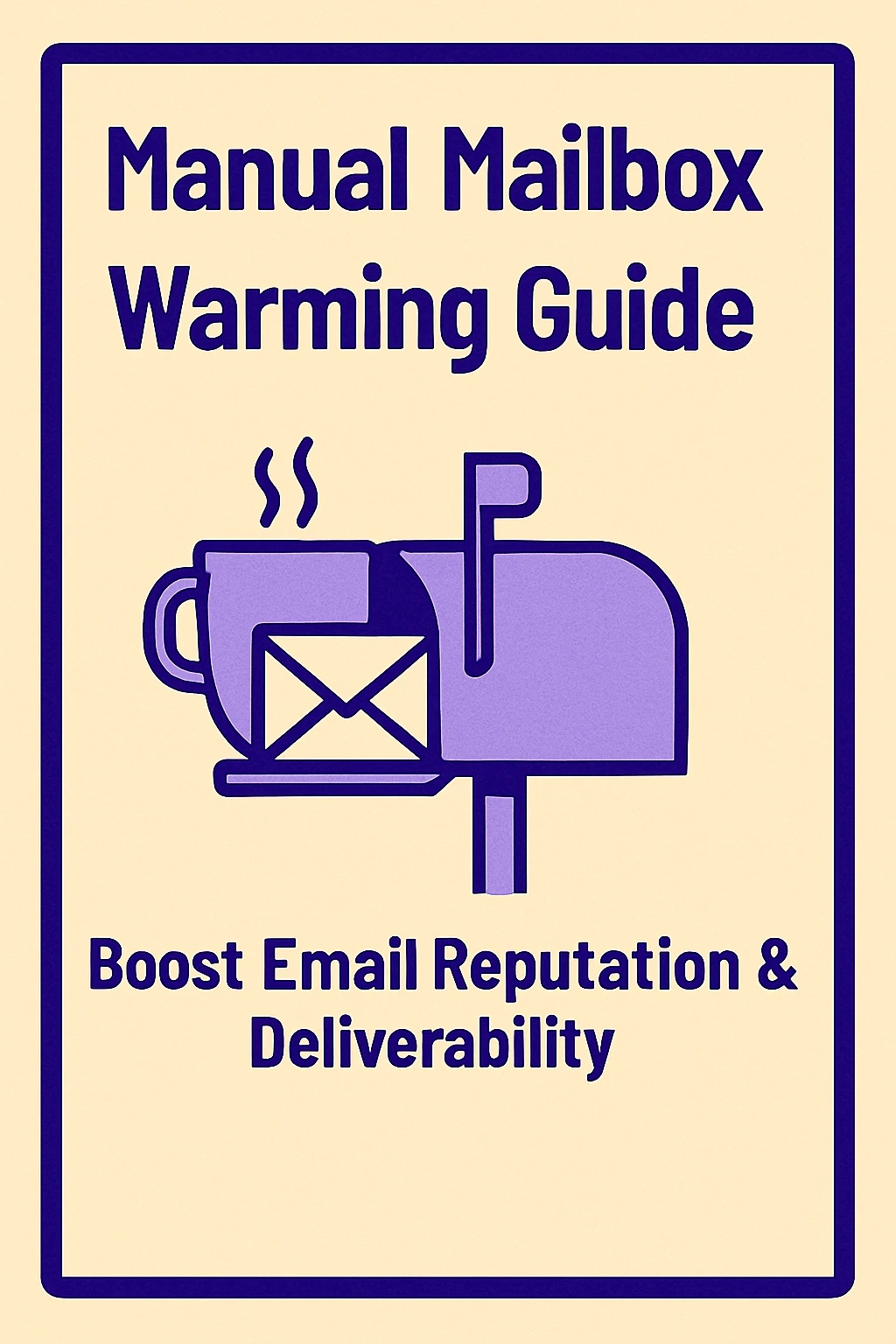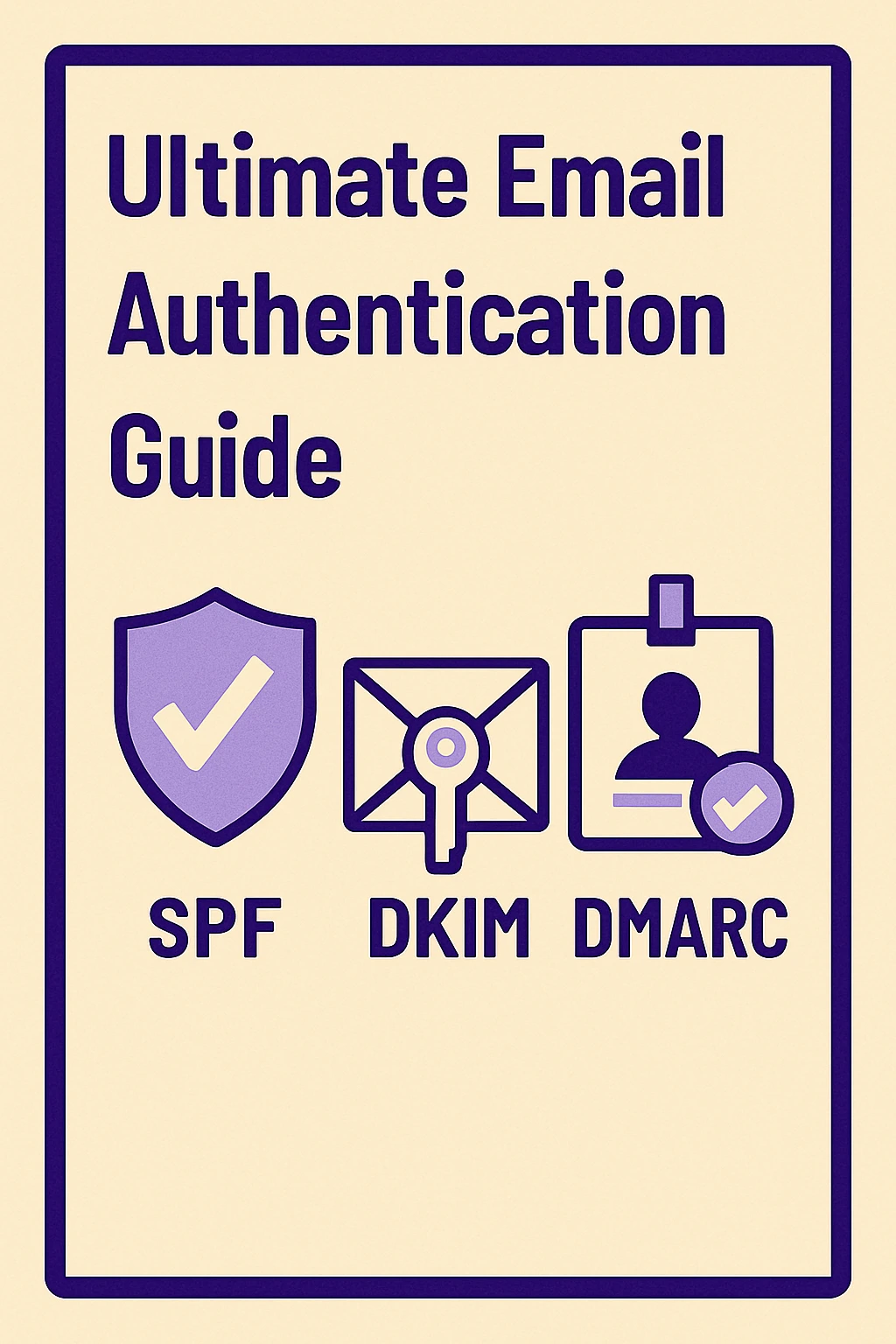Maximize Inbox Placement with Outbound IP Rotation
This blog explores the role of outbound IP rotation in maintaining strong email deliverability across modern email infrastructure platforms. Whether you're sending cold emails, transactional messages, or high-volume campaigns, IP rotation helps prevent blacklisting, improves inbox placement, and balances sending loads. We explain the core concepts behind outbound IP rotation, why it matters, and how platforms like Mailkarma.ai, SMTP2GO, Mailgun, SendGrid, and Postmark handle it. You’ll also find practical tips on technical setup, authentication, warm-up strategies, and IP reputation monitoring. By the end, you’ll understand how to protect your domain reputation, avoid spam filters, and choose the right tools for your email infrastructure. Don’t forget to check out Mailkarma.ai — your trusted partner for real-time reputation monitoring and blacklist protection.

If you've been battling poor inbox placement or worrying about email deliverability, you're not alone. Outbound IP rotation is one of the most effective ways to keep your emails from landing in spam folders, especially within modern email infrastructure platforms.
Let’s break down what outbound IP rotation is, why it matters, and how it helps boost your email sending reputation when you’re managing bulk email infrastructure or running high-volume campaigns.
What Is Outbound IP Rotation?
Basic Concept of IP Rotation
Outbound IP Rotation means your emails are sent from a pool of different IP addresses instead of just one. Think of it like sending letters from different post offices to avoid overloading just one. By rotating IPs, you avoid triggering spam filters and improve your chances of reaching the inbox.
How Outbound IPs Work in Email Sending
Each time your SMTP server sends an email, it can use a different IP address from the available pool. This is especially helpful in cold email systems and high-volume email sending, where repeated use of one IP can lead to it being blacklisted.
Manual vs Automated IP Rotation Systems
Some email senders manually set up IP rotation rules. However, many modern platforms offer automated systems that handle rotating IP addresses, email throttling, and sending limits intelligently.
Why Outbound IP Rotation Matters

Enhancing Email Deliverability
Rotating IPs can drastically improve email deliverability. By spreading out the load across multiple IPs, you reduce the chances of one IP being flagged or blacklisted. This keeps your domain reputation clean and trusted.
Avoiding IP Blacklisting
Sending large volumes from a single IP can quickly lead to blacklisting. Outbound IP rotation acts as a preventative measure. Combined with email blacklist prevention and smart authentication protocols (like SPF, DKIM, and DMARC), it keeps your messages safe from spam filters.
Load Balancing for High-Volume Sends
When sending tens of thousands of emails, load balancing across multiple IPs ensures no single IP gets overwhelmed. This allows SMTP relay providers to manage queues effectively and avoid delays or delivery issues.
Outbound IP Rotation in Modern Email Infrastructure Platforms
How Top Providers Handle IP Rotation
Mailkarma.ai
Mailkarma.ai is a comprehensive email reputation and infrastructure intelligence platform designed to give marketers full visibility into their outbound email performance. It doesn't send emails directly but plays a crucial role in monitoring sender health, warming up IPs and domains, and preventing costly blacklists.
Best for: Cold email agencies, outreach platforms, and email marketers needing advanced reputation monitoring and blacklist protection.
Features:
- Real-time IP and domain reputation monitoring
- Blacklist and spam filter alerts
- IP and domain warm-up tracking
- Smart deliverability insights and email health scoring
Pros:
- Accurate, real-time blacklist monitoring across dozens of databases
- Built specifically for cold email and outreach use cases
- Excellent support and easy onboarding
Cons:
- Doesn't include built-in sending infrastructure
- Advanced metrics may be overwhelming for non-technical users
SMTP2GO
SMTP2GO is a reliable cloud-based SMTP relay service that enables users to send transactional and marketing emails securely with excellent deliverability. It offers dedicated IP rotation, spam protection, and detailed analytics.
Best for: SMBs and growing teams looking for a simple, no-fuss SMTP service with good support.
Features:
- Shared and dedicated IPs
- Bounce and complaint tracking
- Blacklist monitoring and automated IP rotation
- Simple API and SMTP integration
Pros:
- Fast setup and intuitive dashboard
- Responsive global support
- Great deliverability results
Cons:
- Limited marketing automation features
- Reporting dashboards need customization
Mailgun
Mailgun is a developer-first email infrastructure platform ideal for transactional email and application-based sending. It offers programmatic IP rotation, email authentication, and strong API-based workflows.
Best for: Developers and SaaS companies managing large-scale email workflows.
Features:
- API-driven email sending with full logging
- IP pool and dedicated IP rotation
- Inbox placement testing
- Built-in SPF, DKIM, and DMARC support
Pros:
- Scalable infrastructure
- Rich developer documentation
- High inbox rates for transactional emails
Cons:
- Technical learning curve
- Premium pricing for higher volumes
SendGrid
SendGrid provides scalable email marketing and transactional email solutions. With shared and dedicated IP options, it’s ideal for businesses that need volume, analytics, and template management.
Best for: Marketing teams looking for an all-in-one email infrastructure with strong analytics.
Features:
- IP warm-up and rotation tools
- Email marketing and automation workflows
- RESTful API and SMTP support
Pros:
- Strong analytics and reporting tools
- Easy drag-and-drop editor
- Established sender infrastructure
Cons:
- Performance varies on shared IPs
- Customer support depends on the plan tier
Postmark
Postmark is known for its ultra-fast and reliable transactional email delivery. It’s trusted by developers for mission-critical emails and uses tightly controlled IPs for consistent inboxing.
Best for: SaaS apps and platforms sending time-sensitive transactional emails.
Features:
- Trusted IP infrastructure with minimal rotation
- Real-time message logs and analytics
- Dedicated IPs for higher plans
Pros:
- Exceptional delivery speeds
- Developer-focused tools and APIs
Cons:
- Not suitable for cold outreach or bulk marketing
- High cost for low use. Shared IPs are cheap but risky. Dedicated IPs give full control, vital for bulk emails. Choose based on your email volume and risk.
Technical Aspects of IP Rotation

DNS Configuration and PTR Records
Correct PTR (reverse DNS) records must be set for each IP to maintain trust with receiving servers. DNS misconfigurations can cause bounces or spam issues.
SPF, DKIM, and DMARC Setup for Multiple IPs
Each sending IP should be authenticated with email protocols like SPF, DKIM, and DMARC. This prevents spoofing and builds trust, helping improve inbox placement.
Role of SMTP Relays and MTAs in Rotation
Your SMTP relay provider or Mail Transfer Agent (MTA) manages the actual IP switching. Top platforms automate this within their infrastructure.
Benefits of Using Outbound IP Rotation
Improved Sender Reputation
When your reputation is spread across several IPs, the impact of one underperforming IP is minimized. This balances your sender score and improves overall trustworthiness.
Lower Bounce and Complaint Rates
Outbound IP rotation allows for testing and segmenting email sends across different IPs, reducing spam complaints and bounce rates. You can fine-tune which IPs perform best.
Better Inbox Placement for Cold Emails and Campaigns
If you run cold email systems, you already know how sensitive they are to spam filters. IP rotation improves inbox placement by presenting your emails from fresh, authenticated IPs with clean histories.
Challenges and Best Practices
Proper IP Warm-up
You can’t just plug in a new IP and send thousands of emails. IP warm-up means gradually increasing your send volume to build a positive reputation.
Monitoring Each IP’s Reputation
Use tools like MailKarma.ai to track and manage your IP reputation. Set up alerts and reports to avoid surprises.
Synchronizing Rotation with Domain Reputation
Your domain reputation must also be managed carefully. Even if your IPs are clean, a bad domain can hurt deliverability.
Avoiding Sudden IP Changes
Switching too quickly between IPs can trigger spam filters. Keep your rotation controlled and steady.
Who Should Use IP Rotation?
SaaS Platforms
If you're running a SaaS product with transactional emails, rotating IPs ensures timely delivery and high reliability.
Cold Email Agencies
Cold outreach is sensitive to blacklist triggers. IP rotation is a must-have if you're sending outreach at scale.
Large-Scale Email Marketers
For marketers managing subscriber lists in the hundreds of thousands, rotating IPs keeps deliverability metrics consistent.
Transactional Email Senders
Platforms sending password resets, order confirmations, or billing notices need high deliverability. IP rotation helps maintain consistent inbox placement.
Conclusion
Outbound IP rotation isn’t just a technical feature—it’s a strategic tool. Whether you’re using email infrastructure platforms for bulk outreach or critical transactional messages, rotating IPs protects your sender reputation, ensures better inbox placement, and prevents spam issues.
Modern email systems must integrate IP warm-up routines, monitor domain and IP reputation, and maintain authentication with DKIM, SPF, and DMARC. Email deliverability is no longer optional—it's a competitive advantage.
Promote Your Deliverability Strategy
If you're serious about getting your emails seen, check out Mailkarma.ai for real-time IP and domain reputation monitoring. From blacklist alerts to warm-up automation, it’s your go-to email hygiene toolkit.
Tools Overview
- Mailkarma.ai – offers deep insights into your IP and domain reputation. It gives you alerts, tracks warm-ups, and protects against blacklists.
- SMTP2GO – Reliable for small to mid-sized businesses with email blacklist prevention.
- Mailgun – Best for developers and enterprise email infrastructure platforms.
- SendGrid – Great for marketers needing scalable, dedicated IP rotation.
- Postmark – Excellent for transactional emails with stable, trusted IPs.
FAQs
Is IP rotation necessary for all email senders?
Not everyone needs it. Small senders with low volumes can get by with shared IPs. But high-volume or cold email senders should use IP rotation.
Can IP rotation harm deliverability if done incorrectly?
Yes. Improper setup or skipping warm-up steps can backfire. Always follow best practices or work with platforms that automate it safely.
How many IPs should be used in a rotation pool?
It depends on your sending volume. A typical cold email sender might start with 2–3, while enterprise platforms might use 10+.
Is IP rotation a replacement for domain warm-up?
No. IP rotation and domain warm-up go hand-in-hand. Both are needed for long-term email health.
Recent Blogs
FAQs: Everything You’re Wondering About Cold Email Deliverability & MailKarma’s Infrastructure
MailKarma is a dedicated email infrastructure solution built exclusively for cold email outreach. Unlike shared inbox tools or general ESPs, MailKarma gives you complete control over your sending setup—private US IPs, clean domains, and expert-backed deliverability practices. Built by cold email pros, MailKarma is optimized to scale outreach without landing in spam.
Because MailKarma sets up private infrastructure—including custom domains and mailboxes—it doesn’t offer a traditional free trial. However, you can explore the platform, view your dashboard, and test features before provisioning infrastructure. Our private dedicated email servers cost $150 per server plus $0.001 per email sent, making it extremely cost-effective for high-volume cold email campaigns. For Gmail Workspace solutions, pricing starts at $3.50 per email with a 10-email minimum, dropping to $2.50 per email for volumes over 100 emails. This transparent pricing model ensures you only pay for what you use while maintaining enterprise-grade email deliverability.
Yes. MailKarma automatically sets up SPF, DKIM, and DMARC records using best-in-class standards. No technical hassle—our system handles everything behind the scenes, and our support team is always ready to assist if needed.
Every MailKarma subscription includes:
- Automated DNS setup (SPF, DKIM, DMARC)
- Private mailbox hosting
- Ongoing deliverability optimization
- Server monitoring and uptime guarantees
It depends on your monthly sending volume and the number of contacts per sequence. To simplify this, MailKarma includes a volume-based calculator inside the app to help you choose the optimal setup for scale, safety, and inbox placement.
Gmail and Outlook aren't built for cold outreach—they throttle volume, rotate IPs, and limit deliverability. MailKarma gives you:
- Dedicated infrastructure
- Warmed IPs and aged domains
- No shared resources
- Built-in best practices for cold outreach
It's the infrastructure your outreach actually needs.

.png)



